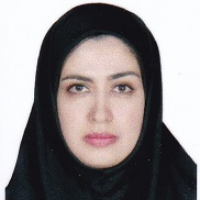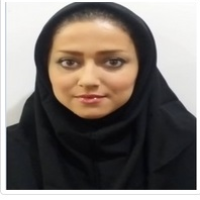The Political Thought of Authoritarianism and Expansionism in the Arsacides Empire on the Strength of Archeological and Historical Data
Archeological data has always been a suitable ground to study diverse dimensions of our predecessors’ life. Some monuments are left from the the Achaemenian Empire that were mostly tools known by political institutions as media for representing and performing their own political thoughts. One of the most important concepts elaborated by Persian political thoughts in order to be shown through artistic works was the concept of power. Excavating artistic works of this period with inscription that are considered as first-hand evidence, one can easily understand on what basis the Persian kings used to establish their dynasty and represent their power. This issue was specifically successful at the time of Dariush I, as one who was very successful in organizing and handling the society. Each political institution needs authority and legitimacy to be held firmly in terms of its statehood sustainability (Heshmatzade, 2002, 57). Besides its functionality, sometimes, power has a kind of legitimatcy by its own. Therefore, after underpinning political thoughts, a political institution tries to achieve legitimate and power, showing them in different ways. The features of remaining monuments since the Persian Empire conveys power and legitimacy because they reflect their manufacturers' thought (Kalikckan, 2006, 118), and lots of their monuments and works were mostly political than functional (Bousharla, 2010, 98). Hence the question in this research is that how the power of the Achaemenian Empire has been represented according to archeological data and inscriptions? The main hypothesis stated is that power of this dynasty used to be achieved by wealth, military power and artistic works that can be inferred from archeological data and inscriptions.
In order to study the political thoughts embedded in artistic works and inscriptions, the analytical method was used and data was collected based on library studies approach .
Ruling over different and vast lands, The Achaemenids did not get themselves limited to their subjects’ obedience. They tried to change the obedience to the faith they used to present and have their dynasty legitimized (Weber, 1947, 328). Therefore through advertising tools such as architecture, inscriptions, coins and stamps and using symbols, as well as pictograms of previous civilizations, they accepted some elaborations. Using these advertising tools, they could show the king as an authorized person, who could make his wishes come true and be considered as one with legitimates. To convey the political messages, the pictures of advertising tools were shown beyond the kingdom centrality and therefore the Persian art were shown the same in various territories. Lots of these pictures indicate the conception of power. Power makes people's political interactions distinct from their other interactions. Morgenta knows politics among nations as fighting on the way of power and according to him, true recognition of fighting for power is the key of understanding political issues. Generally, power means the ability of adopting desires in spite of others objections, of course if there exists an objection. Power is to control and stall others, but effective tools for this purpose could be variant and diverse (Alem, 2013, 88-89). In the Persian dynasty, kings gained the necessary power to control governmental organizations and military force among subjects and foreign lands via making wealth. Persian kings showed both powers in their pictograms. Setting up artistic works depended on kingdom's wealth and would cost a heavy expenditure, made hegemony of kingdom pivotal and was an effective tool for propaganda and soft power. Propaganda and soft power are two important tools to show power and legitimacy. If these tools are successful in practice, they cause increment of power and legitimacy by themselves. The Persian kingdom that used to live within tribes before constitute their kingdom, had no pictogram or propaganda tools, and therefore they had to borrow it from other nations and manipulated them according to their political thoughts. Symbols and pictograms of Persian dynasty were adopted by near east culture wherein concepts such as soft power and propaganda had a very old background. Among the advertising media, stone-made monuments that had picture of kings, gods, writings and the commands of kings on themselves were the primary advertising tools. Attendance of flags, colorful shields, the invention of titles such as four-corners king, king of countries, putting name of kings besides names of Gods and the appearance of poems, military-epic lyrics and preaching religious motivations were of the other sample to be counted for battles and after that they were proved in artistic works of predecessors. The first work one can name for advertisements was related to subjects and people living in foreign countries so that the thoughts were designed by the mag. Nation could easily gain their goals in terms of power and legitimacy by advertising. Representing power and legitimation in artistic tools was a kind of soft power. The ultimate purpose of soft power was to gain military profit without moving army. Soft power advocated government purposes and goals affecting beliefs, emotions, dependences and behavior of the enemy. Moreover representing soft power in artistic works, acts such as economic sanctions, military threats, and diplomacy improvement in that all of which indicate the importance of the propaganda are taken for granted in field of soft power. Persians had such a valuable skill in making, distributing and advertising using pictographic tools and verbally as well (Walton, 1997, 95; Kelly, 2003, 173-175). The Persian dynasty art which was their advertising tools falls within the field of political arts and kings inscriptions falls within fields of political verbal tools. they are both a reflection of political thoughts. One of the political dimensions of political thoughts among the Persian dynasty is gaining power via wealth.
Persian dynasty artistic works are definitely the media that obliviously show different dimensions of political thoughts of their manufacturers. In order to represent and perform political thoughts and the authority upon which society could be established, the Persian dynasty used to benefit from the artistic media. Lots of artistic works of the Persian kingdom mostly indicate the political dimension because of the kind of functional dimension they had. Because Persian kings ought to distribute their political thoughts throughout their kingdom territories via different methods and tools to increase provision of their power and legitimacy, their political methods and whatever was optimizing for their subjects. Therefore artistic works and inscriptions in the ancient world let the political institutions to depict what was in line with their goals on these woks. These works provided a suitable ground to analyze different dimensions of political thoughts, so that one can see in these works that basis of kings power made because of the civil taxes, military force and building palaces are analyzed through these inscriptions. Power was a necessary condition for Persian kings and reflected the existence of a well-done and mature authority of Persian kings. Because of the geographical situation of Iran, taxes had a high position as the necessary wealth for kings to handle their vast territory could be achieved and annexing a new land to the territory of the Persian kingdom was pronounced as an increment of wealth. Darioush I elaborated on unifying different scales, minting to sustain money value, help the establishment of a dynamic economy and preventing burglary on roads as well as building roads through these taxes and his announcement of receiving taxes could be seen repeatedly within inscriptions and also acknowledge it as a basis for kings’ power. The Persian army was the main factor in providing routes and cities' immunity and territory expansion as well. Due to the Iran's geographical situation that was a pass way for different tribes and a connecting way between the ancient east to the west, the military force had a valuable position in the culture of Iranians. Artistic works to which the Persian dynasty used to spend lots of money indicated the superiority and dominance of Persian kings over other rulers of governmental cities. As a matter of fact, Persian kings changed wealth into the artistic works, which were a symbol of wealth themselves and were also considered to be a kind of utopia, gave a holy aspect to the king's character and let them provide their legitimacy in this way. However, the Persian dynasty borrowed other nation’s media to represent their political thoughts, but they purified them alongside their political thoughts to handle their vast kingdom territory pertaining flamboyant tribes, and they were so successful in this respect that presented political thoughts were imitated by rulers of other government cities. So, sometimes Persian architecture was adopted regardless of the specific climate of a region. Therefore, Persian political thoughts provided their political purposes within Persian dynasty and other regions as well.
- حق عضویت دریافتی صرف حمایت از نشریات عضو و نگهداری، تکمیل و توسعه مگیران میشود.
- پرداخت حق اشتراک و دانلود مقالات اجازه بازنشر آن در سایر رسانههای چاپی و دیجیتال را به کاربر نمیدهد.




